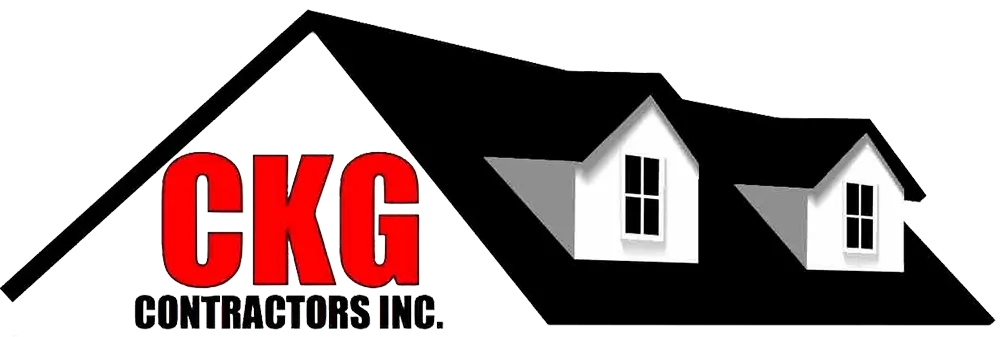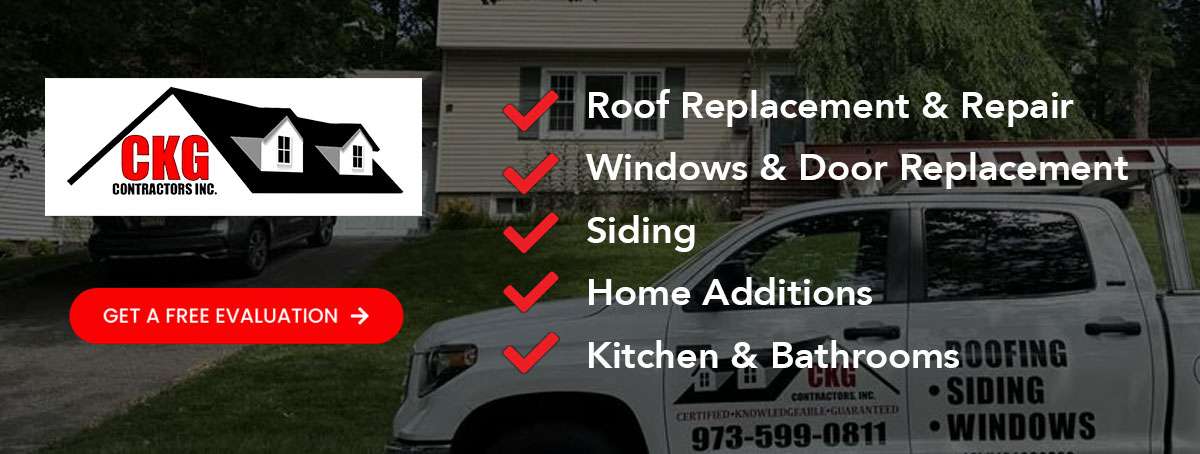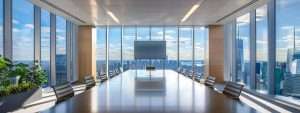Table Of Contents:
- How Often Should You Inspect Your Commercial Roof?
- What Are the Different Types of Commercial Roof Inspections?
- What Are the Signs That Indicate You Need a Commercial Roof Inspection?
- How Do Regular Inspections Help Identify Roof Wear and Tear?
- How Do You Choose the Right Commercial Roofing Contractor for Inspections?
- What Are the Benefits of Regular Commercial Roof Inspections?
- How Much Does a Commercial Roof Inspection Typically Cost?
- How Can You Prepare for a Commercial Roof Inspection?
- Frequently Asked Questions
How Often Should You Inspect Your Commercial Roof?
Commercial roof inspections are essential to maintain the integrity of your building and protect your investment. Generally, most commercial roofs require a detailed inspection at least once per year. Annual inspections serve as a benchmark to assess wear and tear, prevent minor issues from evolving into costly repairs, and help ensure that hidden problems like water intrusion or micro-cracks in sealants are detected early. In addition, incorporating measures for storm damage repair can address any potential issues arising from severe weather before they escalate. In addition to regular inspections, the roofing system’s age, material type, previous maintenance history, and environmental exposure all play a role in determining the ideal frequency.
For older properties or roofs with flat or low-slope designs, more frequent inspections may be necessary because these roofs are more vulnerable to pooling water and leaks. In regions with severe weather—such as heavy rain, hail, snow, or high winds—inspections should be scheduled not only annually but also as needed after major events to prevent abrupt damage. Proactive inspections and prompt repairs protect your asset, ensure safety, support insurance claims, and can even enhance property value when selling or leasing the building.
What Is the Recommended Annual Inspection Frequency for Commercial Roofs?
The industry standard is a comprehensive inspection every 12 months. This annual review allows technicians to check the entire roofing system, including flashings, seams, gutters, and any equipment installed on the roof. During the inspection, professionals use both visual assessments and specialized tools such as moisture meters and infrared scanners to uncover hidden issues like water buildup under the membrane or deterioration from UV exposure.
Adhering to an annual inspection program aligns with preventive maintenance practices and insurance requirements. It enables facility managers to plan budgets effectively, avoid emergency repairs, and maintain a documented history that can be useful during property transactions. In some cases, particularly with roofs made of high-performance materials or in milder climates, visual inspections may be needed more frequently—every six months—to address specific environmental or usage factors.
When Should You Schedule Additional Inspections After Severe Weather?
Severe weather events can dramatically accelerate roofing damage. After events such as hailstorms, heavy winds, or torrential rains, it is best practice to schedule an additional inspection within two to three weeks. Rapid post-storm evaluations help identify acute damages—like micro-dents, punctures, or dislodged materials—that might not immediately be visible from the ground.
Contractors use both visual checks and advanced tools like infrared thermography in these follow-up inspections to detect hidden moisture issues. Prompt repair after a severe weather event can safeguard manufacturer warranties, support insurance claims, and prevent small defects from growing into major failures. If multiple severe weather events occur within a season, additional inspections may be warranted to track progressive issues such as membrane sagging or changes in insulation performance.
How Do Roof Age and Type Affect Inspection Frequency?
Roof age and construction type are critical factors in determining the appropriate inspection schedule. Newer roofs, typically under five years old, may require only routine annual inspections as modern materials and warranties provide robust protection. However, as roofs surpass 10 to 15 years, their vulnerability to environmental stress increases, necessitating biannual or even quarterly evaluations in demanding conditions.
The type of roof also influences inspection needs. Flat roofing systems are prone to pooling water and membrane degradation, making them more susceptible to failures compared to pitched roofs, which generally drain better. Materials such as TPO, EPDM, metal, or modified bitumen each have distinct life expectancies and degradation patterns. For instance, while energy-efficient TPO roofs may suffer from UV-induced issues over time, durable metal roofs might require less frequent maintenance. A tailored maintenance plan that takes into account both the age and type of the roofing system ensures timely repairs and extends overall roof longevity.
Does Building Use Influence How Often Inspections Are Needed?
How a building is used can significantly affect roof wear and tear. Structures that support heavy foot traffic, host rooftop equipment, or have extensive installations like solar panels and HVAC units experience increased mechanical stress. In such cases, these roofs may require supplemental inspections beyond the annual routine—sometimes as frequently as every six months or quarterly—to promptly address accelerated deterioration.
Conversely, buildings with minimal rooftop activity might adhere to the standard annual inspection, unless unexpected events or nearby activities impact the roof’s condition. Factors such as surrounding construction or unusual weather patterns may also call for more frequent evaluations. Additionally, the method of inspection may vary; roofs with heavy installations might need specialized techniques to accurately assess the effects of installed equipment. Customizing the inspection frequency to the building’s operational demands helps ensure that potential issues are identified early, ultimately protecting both the asset and its occupants.
What Are the Different Types of Commercial Roof Inspections?
Commercial roof inspections broadly fall into three categories: visual inspections, infrared inspections, and leak detection inspections.
A visual inspection is the most common and involves a careful walk-through of the roof to look for obvious signs of damage such as cracks, blisters, or accumulated debris. The contractor evaluates flashings, seams, and gutters for proper installation and condition. Visual checks provide a vital first layer of assessment to identify visible wear and tear.
An infrared inspection uses thermal imaging cameras to detect temperature variations on the roof’s surface. These temperature differences can indicate hidden issues like moisture buildup, poor insulation, or air leaks—problems that are not apparent during a standard visual examination. Infrared assessments are particularly useful for flat or low-slope roofs where water intrusion is a concern.
Leak detection inspections are employed when there are signs of water damage inside the building but little evidence on the roof’s surface. Using tools such as moisture meters, acoustic sensors, or dye tests, technicians can pinpoint the source of leaks. This method is critical for targeting repairs before small leaks result in significant interior damage or mold growth.
Together, these inspection methods form a comprehensive strategy that ensures even the most subtle issues are detected and addressed promptly, safeguarding the roof’s long-term performance.
What Is Included in a Visual Roof Inspection?
During a visual roof inspection, a qualified contractor examines all accessible areas of the roof without using specialized electronic equipment. This process includes assessing:
• The roof surface for cracks, discoloration, and blistering. • Flashings around roof penetrations like vents, HVAC units, and skylights. • Seams and joints where different materials meet to ensure proper alignment. • Accumulated debris, standing water, or signs of ponding water. • The condition of gutters, downspouts, and drainage systems.
Photographic documentation is often taken to track changes over time, helping to plan preventive maintenance. Although visual inspections are non-invasive, they are a crucial first step in detecting issues that might later require more advanced evaluation methods, such as infrared imaging, to confirm the condition of hidden membranes or sealants.
How Does Infrared Inspection Detect Hidden Roof Issues?
Infrared inspection uses thermal imaging cameras to capture heat differences on the roof’s surface. Because objects emit infrared radiation, the images produced clearly show areas that are warmer or cooler than their surroundings. These temperature variations can signal moisture intrusion, insulation deficiencies, or air leaks that are not visible to the naked eye.
A trained contractor scans the roof methodically with the thermal camera. Areas where moisture is present will absorb heat differently, showing unusual temperature anomalies that pinpoint potential hidden leaks or insulation failures. This non-contact method is especially valuable for flat or low-slope roofs, where water infiltration can be difficult to detect with a simple visual inspection. Integrating infrared results with visual observations creates a comprehensive picture that aids in precise maintenance planning.
When Is Leak Detection Inspection Necessary?
Leak detection inspections become necessary when signs of interior water damage—such as stains, damp spots, or musty odors—are observed, yet the roof appears normal on the surface. In these cases, the source of the leak may be hidden beneath the roofing membrane.
Contractors use specialized tools, including moisture meters and acoustic sensors, to trace the leak’s origin. Dye tests may also be employed; the injected dye helps reveal the path of water infiltration. This focused inspection is essential for identifying the exact location and severity of the leak, enabling timely repairs that prevent further interior damage, reduce the risk of mold growth, and support insurance claims if needed.
What Are the Signs That Indicate You Need a Commercial Roof Inspection?

Early indicators of roof damage are critical signals that prompt a professional inspection. Look for visible signs such as:
• Minor interior leaks or water stains on ceilings and walls. • Discoloration or damping in specific areas of the roof structure. • Exterior defects like blistering or curling of roofing membranes, or missing granules on shingles. • Unusual accumulation of debris, algae, or moss on the roof surface.
Other subtle warning signs include an unexpected rise in energy bills due to compromised insulation, dark spots in attics, or changes in the texture of the roofing material. Advanced methods like infrared scanning can also detect hidden moisture that might not be apparent during a visual inspection.
Monitoring these symptoms regularly and maintaining detailed inspection records can help facility managers plan timely repairs that prevent minor defects from escalating into major, costly problems.
What Common Roof Damage Should You Look For?
When inspecting a commercial roof, common signs of damage include:
• Cracks, splits, or punctures in the roofing membrane or shingles—often caused by harsh weather or falling debris. • Missing or loose roof tiles and deteriorated sealants around flashings, which compromise the roof’s integrity. • Ponding water on flat roofs, indicative of drainage issues that may lead to leaks. • Rust or corrosion in metal roofing systems, especially around seams and fasteners. • Discoloration or biological growth such as algae and mold that not only affect appearance but also degrade roofing materials.
Recognizing these signs early allows for targeted repairs that are less disruptive and more cost-effective than extensive emergency interventions later.
How Can Early Damage Signs Prevent Costly Repairs?
Identifying minor damage early through regular inspections can prevent small issues from escalating into major failures. Quick repairs of cracks, punctures, or early signs of water damage can save both repair costs and energy efficiency. Early intervention also minimizes the risk of additional damage to surrounding building systems, such as HVAC units or interior finishes.
Timely inspections enable facility managers to maintain comprehensive maintenance records, which support warranty claims and may help lower insurance premiums. In essence, proactive detection not only protects the building financially but also ensures the safety and reliability of the roof over the long term.
How Do Regular Inspections Help Identify Roof Wear and Tear?
Regular inspections are key to detecting both gradual wear and tear and sudden damage. By monitoring the roof over time, facility managers can track changes and identify recurring issues, such as small cracks or shifts in temperature detected via infrared imaging. These subtle changes are early indicators of material fatigue or deterioration that, if left unchecked, can lead to significant structural failures.
Documenting these observations during routine inspections supports predictive maintenance planning. This proactive approach not only extends the roof’s life but also prevents emergency repairs, thereby reducing overall maintenance costs and ensuring continuous building operations. In short, regular inspections serve as an early warning system that bolsters both safety and cost efficiency.
How Do You Choose the Right Commercial Roofing Contractor for Inspections?
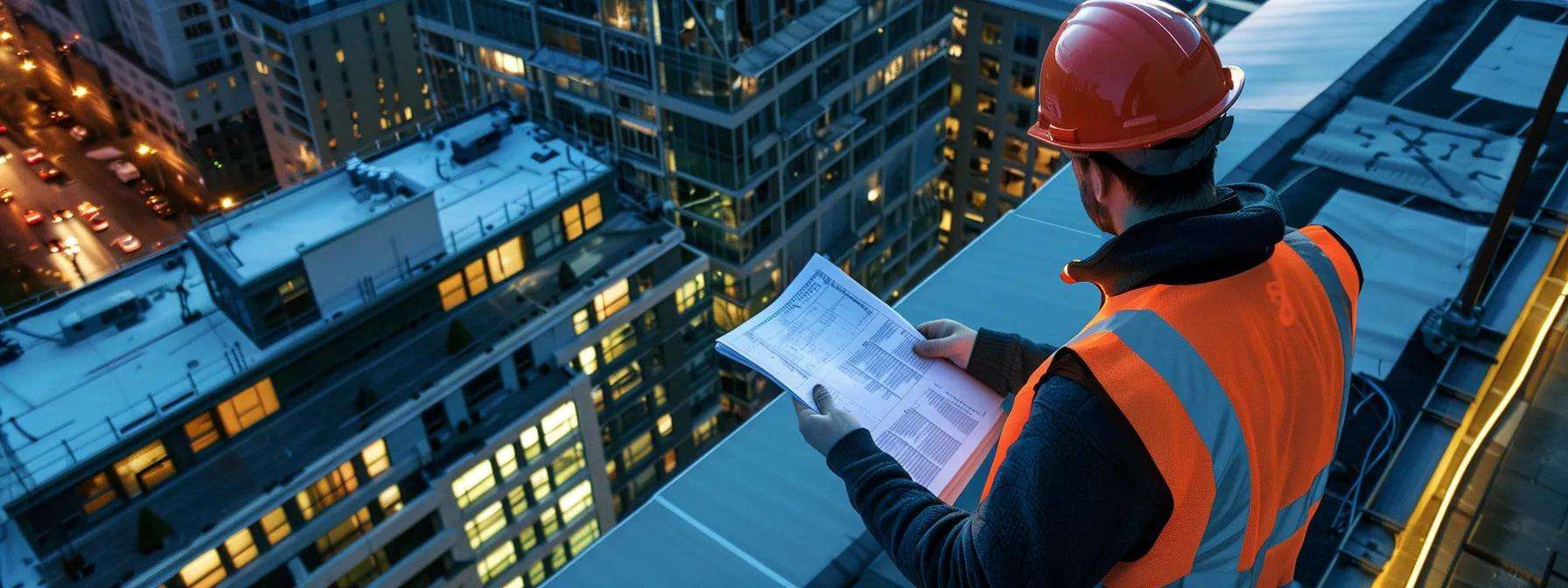
Choosing a reliable commercial roofing contractor is crucial for ensuring thorough inspections and effective maintenance. Key criteria include:
• Certifications and Qualifications: Look for certifications from reputable organizations such as the National Roofing Contractors Association (NRCA) and OSHA compliance credentials. • Experience: Contractors with years of experience are more likely to identify subtle signs of damage and have a proven record of successfully maintaining complex roofing systems. • References and Portfolio: Request testimonials, case studies, and photo documentation from past projects to verify quality and reliability. • Insurance Coverage: Ensure the contractor has adequate general liability and workers’ compensation insurance to protect against potential liabilities. • Price and Scope: Compare quotes not only on cost but also on the comprehensiveness of the services provided, timeliness, and customer service.
Thoroughly evaluating these factors helps secure a contractor who can deliver detailed and actionable inspection reports, ultimately safeguarding your roofing asset and reducing long-term repair costs.
What Qualifications and Certifications Should a Contractor Have?
A qualified commercial roofing contractor should hold certifications from recognized industry organizations, such as the NRCA, and comply with OSHA standards to ensure safe practices. They should also be certified by manufacturers for specific roofing systems like TPO, EPDM, metal, and built-up roofs. Additional credentials related to sustainability or energy efficiency, such as LEED accreditation, further indicate their commitment to modern roofing practices. Request copies of these certifications and licenses to verify their technical expertise and adherence to regional building codes.
Why Is Experience Important in Commercial Roof Inspections?
Experience is vital in commercial roof inspections due to the complexity and scale of these systems. An experienced contractor will have developed a keen eye for detecting subtle signs of wear and deterioration through years of fieldwork. They understand how factors such as material fatigue, harsh weather, and repetitive mechanical stress impact roof longevity. This experience allows them to provide accurate diagnostic reports and maintenance recommendations, often based on historical data and industry best practices. In addition, seasoned contractors are typically better equipped to troubleshoot unexpected issues and manage repairs efficiently.
How Can You Verify Contractor References and Insurance?
Verifying a contractor’s references and insurance is essential for risk management. Ask for testimonials, case studies, and photographic evidence of previous inspections or repairs. Contact past clients to discuss their experience with the contractor’s timeliness and work quality. Additionally, ensure the contractor carries comprehensive insurance, including general liability and workers’ compensation, and ask to see proof of coverage. This due diligence minimizes risks and confirms that the contractor adheres to industry standards, ultimately protecting your investment.
What Are the Benefits of Regular Commercial Roof Inspections?
Regular commercial roof inspections offer significant advantages. They extend the lifespan of the roofing system by catching minor defects—such as small leaks or punctures—before they escalate into catastrophic failures. This preventive approach not only reduces repair costs but also maintains energy efficiency and operational safety. A well-maintained roof reduces the risk of water damage, preserves interior finishes, and enhances tenant satisfaction by boosting overall building safety.
Moreover, consistent inspections ensure compliance with building codes and can lower insurance premiums by demonstrating a proactive maintenance program. In a broader sense, these inspections support sustainability by prolonging the roof’s useful life, thereby reducing waste and the need for premature replacements.
How Do Inspections Extend the Lifespan of Commercial Roofs?
Regular inspections help extend a roof’s lifespan by detecting early-stage deterioration. Routine assessments allow contractors to document wear on components and schedule repairs before small issues evolve into major failures. This systematic process not only preserves the structural integrity of roofing materials such as TPO, metal, and modified bitumen but also improves energy efficiency and fire resistance over time. In essence, a well-documented and proactive maintenance strategy safeguards your roofing asset, reduces emergency repair costs, and delivers a strong return on investment.
What Cost Savings Result From Early Problem Detection?
Early problem detection through routine inspections results in significant cost savings. By addressing minor defects—and thus avoiding emergency repairs or premature roof replacement—facility managers can reduce overall maintenance expenses by a substantial margin. Proactive repairs prevent damage from worsening, lower energy consumption through better insulation, and ultimately help avoid costly downtime. In some cases, a documented history of regular inspections can also lower insurance premiums. Overall, investing in routine inspections is a cost-effective strategy that protects your budget and enhances the roof’s longevity.
How Do Inspections Improve Building Safety and Compliance?
Regular inspections play a vital role in ensuring building safety by identifying potential hazards before they become severe. Detecting issues such as water intrusion, structural deterioration, or compromised fire resistance early on helps prevent accidents, protects occupants, and minimizes liability risks. Furthermore, maintaining a comprehensive inspection record not only supports compliance with local building codes and safety standards but also simplifies legal audits and insurance claims. In summary, proactive roof inspections create a safer, more secure environment for both the building and its occupants.
How Much Does a Commercial Roof Inspection Typically Cost?
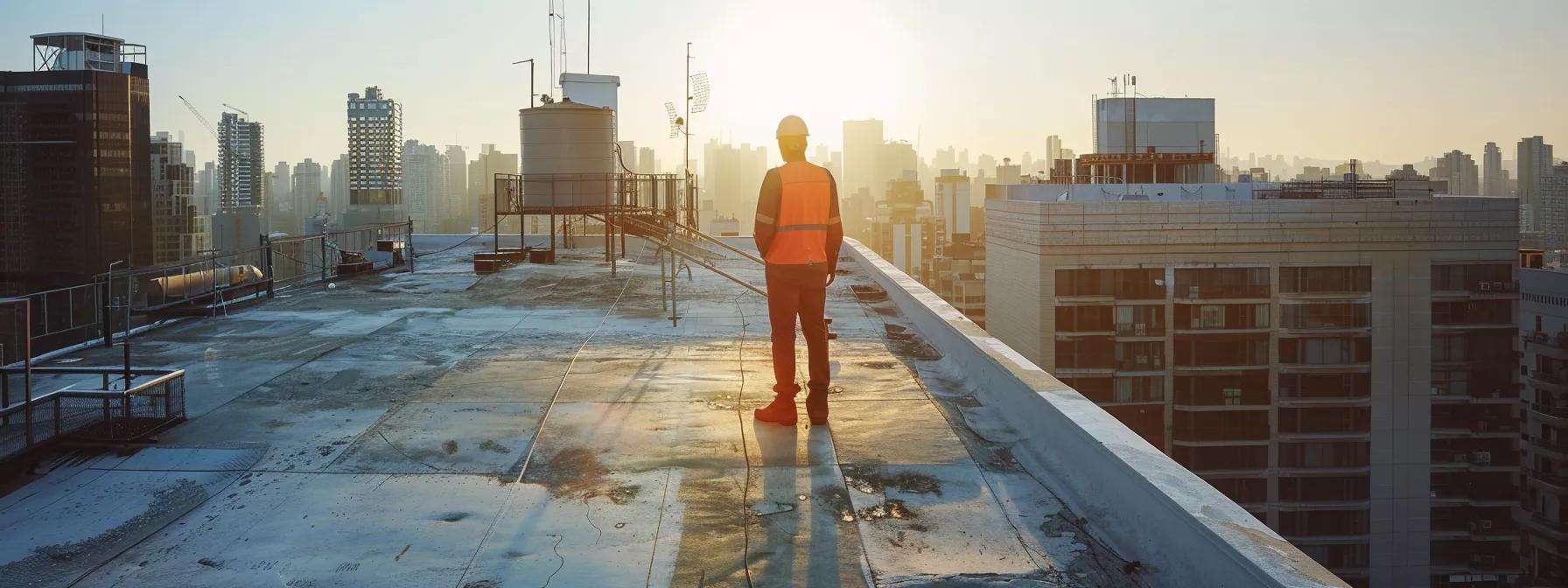
The cost of commercial roof inspections typically ranges between $300 and $1,500, though this depends on several factors including the roof’s size, complexity, and the inspection methods used. Larger properties or those with multi-layered roofing systems will generally incur higher costs. Additional services such as post-storm evaluations or advanced diagnostic assessments using infrared technology can also increase the price.
Many contractors offer tiered packages—from basic visual inspections to comprehensive evaluations that include infrared imaging and moisture detection. While there is an upfront expense for these inspections, the cost is minimal compared to potential emergency repairs or a complete roof replacement. In the long run, a well-maintained roof not only saves money but also safeguards the building’s structure, supports insurance claims, and helps protect overall operational continuity.
Below is an example cost comparison table:
How Can You Prepare for a Commercial Roof Inspection?
Proper preparation for a commercial roof inspection maximizes its efficiency and success. Begin by reviewing all maintenance records, previous inspection reports, and warranty documents. Gather any historical data that could help the contractor understand past repairs or maintenance trends. Make the roof easily accessible by removing debris, vehicles, or other obstacles that might obstruct access. If your building requires specialized safety equipment such as harnesses or scaffolding, arrange for the necessary permits and measures in advance.
Notify tenants or building occupants about the upcoming inspection to minimize disruptions. Ensure that any equipment on the roof—like HVAC units or solar panels—is clearly identified and that contact information for their installers is available if needed. Finally, prepare a list of questions on the inspection process, expected timelines, and follow-up services. A detailed checklist can help keep the process organized and ensure that all potential issues are addressed.
What Should You Expect During the Inspection Process?
During the inspection, expect a systematic evaluation of both visible and hidden aspects of the roofing system. The process often starts with a visual inspection where the contractor walks the roof to document any obvious damage such as cracks or blisters. Specialized tools like moisture meters and thermal cameras are then used to detect hidden issues. The technician will compile findings into a detailed report outlining current conditions, potential problem areas, and recommended repairs.
Building owners may be invited to join a walkthrough to discuss any concerns. Typically, the entire process takes only a few hours, and a follow-up meeting is scheduled to review the report and address questions. This report serves as a roadmap for ongoing maintenance and budget planning.
How Can You Use an Inspection Checklist to Stay Organized?
An inspection checklist is a valuable organizing tool that standardizes the evaluation process. It details each component of the roof—from the condition of the membrane and flashings to the performance of gutters and drainage systems. By following a structured checklist, contractors ensure that no area is overlooked. Additionally, checklists help in comparing data over successive inspections, allowing facility managers to identify trends and prioritize repairs.
Using the checklist as a communication tool between the contractor and building management facilitates scheduling and follow-up decisions. It can include sections for noting severity levels, repair cost estimates, and targeted timelines. This organized documentation not only supports preventive maintenance planning but also strengthens your case during negotiations with insurance companies or potential buyers.
What Questions Should You Ask Your Roofing Contractor?
When selecting a roofing contractor, asking the right questions ensures transparency and reliability. Consider asking:
- What inspection methods do you use and recommend for my roofing system? This clarifies whether both visual and advanced diagnostic (e.g., infrared) inspections are performed.
- Can you provide references from similar commercial roof inspections? Past client testimonials and case studies give you confidence in their expertise.
- What certifications and training do your technicians have? Ensure they comply with industry standards and safety protocols.
- How will you document your findings, and what does your report include? Detailed documentation is key for future maintenance and insurance purposes.
- What is your estimated timeline for the inspection, and what preparatory measures are needed? This helps plan the process with minimal disruptions.
- Do you offer any follow-up or maintenance services post-inspection, and what are the costs? Understanding the scope of ongoing services aids in budgeting.
- How do you ensure compliance with local building codes and safety regulations? This reassures you that the roofing system will be maintained to the highest standards.
Asking these questions will help you select a contractor committed to providing thorough and reliable inspections for your commercial roofing needs.
Frequently Asked Questions
Q: How often should a commercial roof be inspected? A: Commercial roofs should generally be inspected at least once per year, with additional inspections after severe weather events. High-use roofs may require inspections every six months.
Q: What are the benefits of using infrared inspections in roof evaluations? A: Infrared inspections reveal hidden moisture, air leaks, and insulation issues through thermal imaging, enabling targeted repairs before damage worsens.
Q: Can regular roof inspections help in reducing overall building maintenance costs? A: Yes, by catching small issues early, inspections reduce expensive emergency repairs and enhance energy efficiency, saving money in the long run.
Q: How does building use affect the frequency of roof inspections? A: Buildings with heavy foot traffic, extensive rooftop equipment, or exposure to extreme weather require more frequent inspections compared to those with minimal activity.
Q: What should I ask my roofing contractor before scheduling an inspection? A: Inquire about their inspection methods, certifications, experience, documentation process, timeline, follow-up services, and how they ensure compliance with building codes.
Q: What items are typically included in a comprehensive roof inspection report? A: A complete report documents the condition of the roofing membrane, flashings, gutters, and drainage systems, along with infrared or moisture scan results and repair recommendations.
Q: How do regular roof inspections improve overall building safety? A: Regular inspections identify structural vulnerabilities and potential water intrusion issues early, ensuring that necessary repairs are made to maintain safety and compliance.
